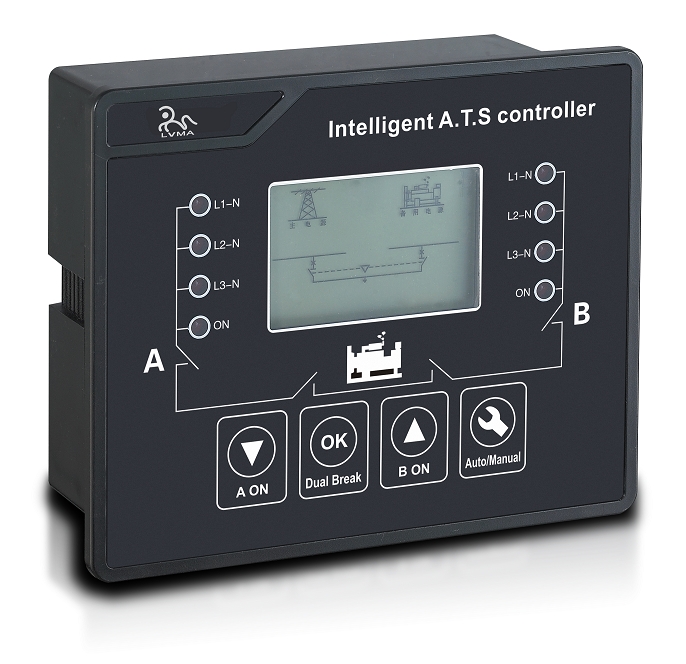ATS controller manual
Precise monitoring and fast decision-making
The intelligent ATS controller is able to accurately monitor various parameters of the power supply, such as voltage, frequency and phase. For example, it can detect small fluctuations in the main power supply voltage and quickly determine the power supply status when the fluctuations are out of the normal range (e.g., when the voltage deviation exceeds ±5%). Compared with traditional controllers, it can detect problems in a more timely and accurate manner, and quickly make the decision to switch to the backup power supply, and the general switching time can be controlled in a few seconds or even shorter, effectively reducing the load outage time.
Intelligent control strategy
It can flexibly set multiple control strategies according to different application scenarios and user requirements. For example, it can set different switching delay times, for some equipment that requires very high power stability (such as precision medical instruments), it can be set to switch without delay; while for some equipment that is not too sensitive to instantaneous fluctuations (such as ordinary office equipment), it can be set to an appropriate delay time (e.g., 3 – 5 seconds) in order to avoid frequent switching due to short-term power fluctuations. It can also realise the self-learning function, which automatically adjusts the control strategy through long-term observation of power quality and load characteristics to improve the adaptability and reliability of the system.
Remote monitoring and management function
The intelligent ATS controller supports remote monitoring. Through network connection (e.g. Ethernet, Wi-Fi, etc.), managers can view power status, switching records, fault information, etc. in real time at the remote control centre or through mobile APP. For example, in a large data centre, the operation and maintenance personnel can keep track of the operation of the ATS in the monitoring room without going to the site. Moreover, when abnormalities are found, control instructions can be issued remotely, such as manually switching the power supply or adjusting the parameters of the controller, which greatly improves management efficiency and response speed.
Fault diagnosis and early warning capability
It is able to diagnose faults in itself and related power systems. Not only can it accurately point out the type of fault when it occurs (such as short circuit of main power supply, under-voltage of standby power supply, etc.), but it can also warn of potential fault risks in advance. By analysing the historical data of power supply parameters, if it finds that the main power supply voltage fluctuates frequently and gradually increases the trend, it will issue an alarm in advance to remind the maintenance personnel to carry out inspection and maintenance, thus effectively reducing the incidence of system failure.
Data Recording and Analysing Function
Intelligent ATS controller can record the historical data of power switching in detail, including switching time, reason for switching, specific parameters of power failure, etc. These data can be used for analysis afterwards. These data can be used for analysis and statistics afterwards to help users optimise the power system. For example, by analysing the switching records, you can find out the high incidence of power failures or the power lines with frequent failures, so that you can carry out targeted upgrading or strengthen maintenance.










